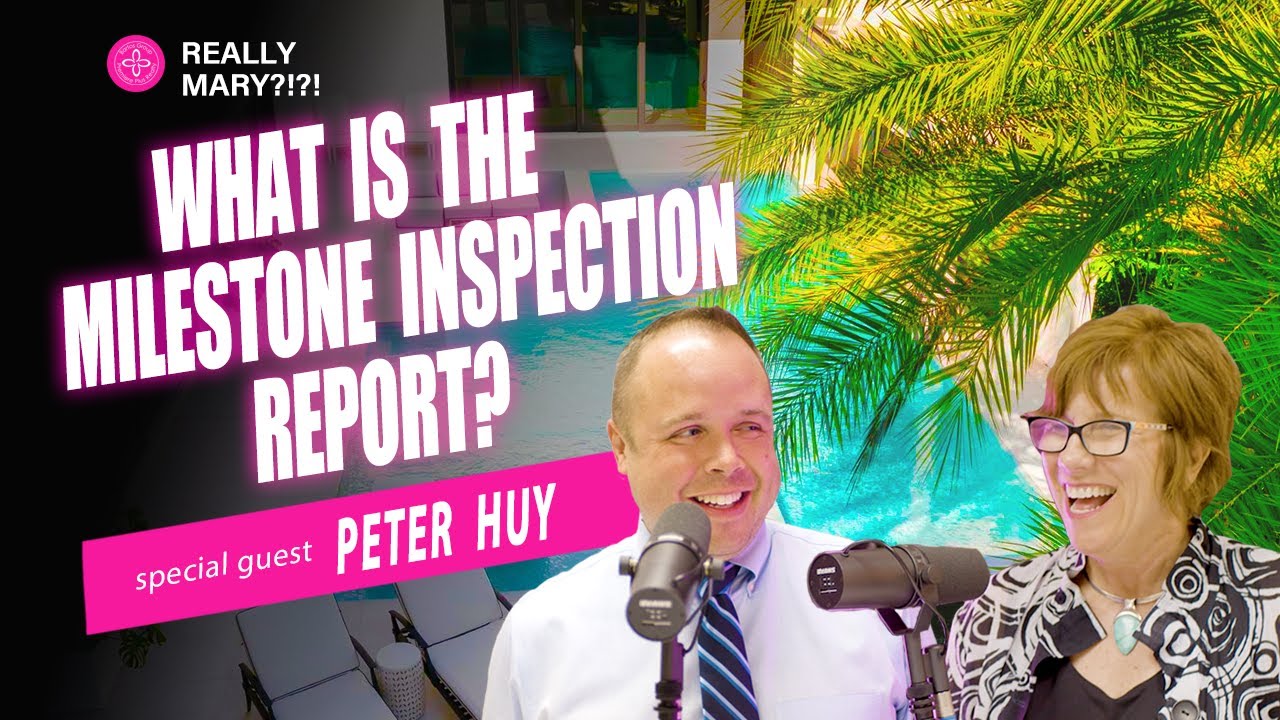
The milestone inspection has become a central topic for condominium communities across Florida. Triggered by past structural failures and aimed at preventing future tragedies, the milestone inspection requirement affects condos three stories and above and introduces new inspection routines, budgetary obligations, and legal considerations for associations, owners, and prospective buyers. This blog breaks down what the milestone inspection means, how it works, what reserves and assessments may follow, and practical steps each stakeholder should take to protect safety and financial stability.
Why the Milestone Inspection Exists
The milestone inspection requirement is a legislative response to catastrophic structural failure in Florida. It mandates targeted structural reviews for condominiums of three stories or greater. The core goal of the milestone inspection is straightforward: identify potential structural problems early so that hazards can be corrected before an incident occurs.
This preventative approach relies on engineers, architects, and building professionals to evaluate the condition of critical components. The milestone inspection is not merely a paperwork exercise. It is an on-the-ground review intended to determine whether a building’s structural integrity is sound and whether immediate repairs or further investigation are necessary.

Who Must Comply and When
The milestone inspection requirement applies to condominiums three stories and taller. Timelines were originally set in a range tied to a building’s age—commonly 25 to 30 years from the certificate of occupancy. Coastal municipalities initially faced a 25-year trigger, but the state extended that to 30 years while allowing local governments to retain the 25-year requirement if they choose.
These timelines have already seen adjustments and could change again, which is why many associations are acting proactively. Whether or not an association is currently required to complete a milestone inspection by a specific deadline, prudent boards are moving forward now rather than waiting for final legislative clarity. As one observer put it, it is often “better to have the inspection sooner than later.”
How the Milestone Inspection Process Works
Milestone inspections typically occur in two phases.
- Phase One: A noninvasive assessment performed by licensed professionals. The team looks for visible signs of deterioration and evaluates key systems and elements to determine whether further analysis is needed.
- Phase Two: If phase one reveals issues, phase two becomes more in-depth and may involve destructive testing. This can include opening walls, removing coverings, and targeted sampling to assess the extent and cause of deterioration.
Phase two is deliberately more intrusive because it produces definitive answers about hidden damage that is not detectable through visual inspection alone. The milestone inspection is therefore a staged process designed to allocate resources efficiently while ensuring safety.

Structural Integrity Reserves and Budget Impacts
The milestone inspection law also requires associations to start budgeting for a specific reserve category commonly referred to as the structural integrity reserve. This reserve is meant to cover major, safety-related items rather than routine maintenance.
Key items that fall under the structural integrity reserve include:
- Roof systems
- Primary structural components
- Major plumbing infrastructure
- Fireproofing and other life-safety systems
For budgets adopted after December 31 of the triggering year, the association must include an analysis of these components and begin allocating funds toward the structural integrity reserve. Many associations will create a separate reserve line item specifically for these items so that funds are visible and protected for their intended purpose.

What Happens When a Milestone Inspection Finds Problems
If a phase one milestone inspection reveals concerning conditions, the association often proceeds to phase two. When the second phase confirms significant deterioration or structural deficiency, boards face several difficult but necessary steps:
- Develop a remediation plan with engineers and contractors.
- Estimate costs and timelines for repairs.
- Determine funding—use existing reserve funds, levy a special assessment, or pursue financing options.
- Communicate clearly and promptly with owners about safety, schedule, and financial impacts.
Special assessments are a real possibility when major repairs are needed. Owners and prospective buyers must account for this risk when evaluating condominium properties because assessments can be substantial and may change the affordability and attractiveness of a unit.

Practical Guidance for Buyers
Prospective buyers entering the Florida condominium market should proceed with extra diligence. A few practical steps:
- Request the most recent milestone inspection reports, if any exist, and ask whether phase two is pending.
- Obtain complete financial statements and review budgets for any structural integrity reserve and related line items.
- Ask for the association’s meeting minutes going back at least 12 months. These minutes often reveal whether inspections are scheduled, whether engineers have been retained, and whether board discussions contemplate assessments.
- Consider extending inspection and review contingencies. The standard three-day right of rescission that accompanies condo document delivery may be insufficient for a full review of minutes, inspections, and potential assessments.
- Engage trusted professionals. A real estate agent experienced in condo transactions and a real estate attorney can help interpret documents and uncover red flags.
Important practical note: the three-day right of rescission applies to delivery of condominium documents, but not every document is explicitly identified in all forms. Minutes, while part of the records available for review, are not always included in the delineated documents that buyers receive automatically. Buyers should therefore request minutes early in the process or negotiate longer review periods to accommodate a meaningful analysis.
Practical Guidance for Sellers and Associations
Sellers and boards have parallel responsibilities. Sellers should be transparent and provide buyers with any known inspection reports and documentation about upcoming projects or assessments. Associations should:
- Schedule milestone inspections proactively, even before mandatory deadlines, to understand building condition and budget needs.
- Include a structural integrity analysis in upcoming budgets and create a clear reserve plan.
- Ensure meeting minutes are comprehensive and accessible. Good recordkeeping reduces uncertainty and supports responsible governance.
- Communicate with owners about potential assessments and timing so planning and cash flow are manageable.
When an association waits until the last minute, it often increases legal and financial risks. Boards are encouraged to work with qualified engineers, attorneys, and accountants to establish a transparent path forward.

Common Misconceptions About the Milestone Inspection
- Milestone inspection is not a one-off compliance checkbox. It is a risk management process tied to reserves and repairs.
- Phase two is not the default. Destructive testing occurs only when phase one indicates a need for deeper evaluation.
- Minutes matter. Owners may assume the three-day review is enough, but minutes often contain the earliest signals about inspections and potential assessments.
Communication and Legal Support
Clear, proactive communication is essential. Owners have a right to know about safety issues and financial planning. Boards that communicate openly and work with legal counsel will be better positioned to implement inspection recommendations without unnecessary conflict.
“This is a time to really make sure you’re working with trusted professionals,” the legal expert advises, stressing the importance of agents and attorneys who know Florida condo law and the milestone inspection process.
Checklist: Milestone Inspection Preparedness
Association boards and owners can use this checklist to prepare:
- Determine whether the building is subject to the milestone inspection timeline.
- Engage a licensed structural engineering firm experienced with condominium assessments.
- Schedule phase one as a priority; be ready to plan for phase two if necessary.
- Reserve budgeting: include a structural integrity reserve analysis in the next adopted budget after year-end.
- Maintain and distribute clear minutes that document board discussions and inspection activity.
- Prepare contingency plans for assessments or financing options should repairs be required.
- Encourage owners to seek legal and financial advice when buying or selling.
What is a milestone inspection and which condominiums must have one?
A milestone inspection is a structural evaluation required for condominium buildings three stories and taller. It involves a licensed team performing a phase one noninvasive review and, if needed, a phase two in-depth evaluation to determine the building’s structural condition and necessary repairs.
How often must milestone inspections be performed?
Timelines are typically tied to a building’s age, commonly triggered at around 25 to 30 years from the certificate of occupancy. State law has adjusted these numbers and allowed local municipalities to adopt more stringent timelines in some coastal areas. Associations should verify current local requirements and act proactively.
What is included in the structural integrity reserve?
The structural integrity reserve covers major safety-related components such as roofs, primary structural elements, major plumbing systems, and fireproofing. Budgets adopted after the relevant cutoff must include an analysis and begin funding this reserve.
Can a milestone inspection lead to a special assessment?
Yes. If inspections uncover significant repair needs, associations may levy special assessments, use reserve funds, or pursue financing to pay for work. Buyers and owners should factor this possibility into planning and due diligence.
What should buyers request when considering a condo?
Buyers should request recent milestone inspection reports, the association’s financials and budgets, and at least 12 months of board meeting minutes. They should also consider extending document review periods beyond the typical three-day window to allow time for proper legal and engineering review.
Final Thoughts
The milestone inspection is a meaningful step toward safer condominium living in Florida. It shifts the focus from reactive repairs to proactive assessments, requiring associations, owners, and buyers to coordinate carefully. The changes also put a premium on responsible governance and clear communication.
For condo owners and prospective buyers, the message is clear: act with eyes wide open. Obtain the relevant documents, request milestone inspection information, check the association reserves and budgets, and consult experienced real estate professionals and attorneys to fully understand what the milestone inspection means for health, safety, and finances.
Responsible inspection, informed budgeting, and transparent governance together reduce risk and protect property values. Embracing the milestone inspection process now will help Florida communities avoid preventable tragedies and build a safer future.
Contact Us Today! |
|
Providing you the experience you deserve! |
| Click me |
